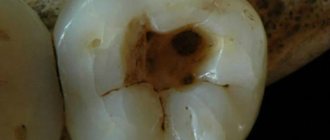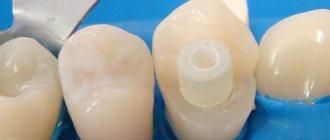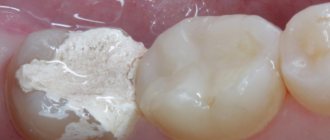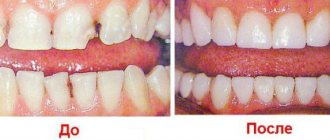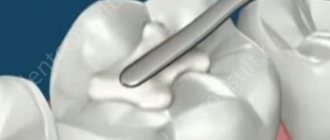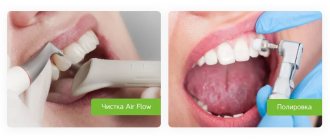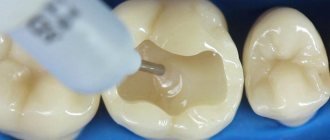Teeth regeneration technology
The regeneration technology is based on a combination of stem cells, support material and signaling molecules. In about 60 days, the process of growing a completely new and, most importantly, healthy tooth with real roots, dentin and pulp lasts.
At this point in time, high-quality implantation is unthinkable without bone structures that are in good condition, otherwise the installed prostheses simply will not hold securely. Therefore, the technology of growing teeth from stem cells, which does not depend on such limitations, opens up great opportunities in terms of preserving and improving human health. The only problem is that its cost will be very high, this is suggested by logic and a simple statement of the fact of the price level in the field of high-quality implantation and prosthetics. That is why we can talk about this only as a very distant future, so the relevance of preserving what nature has given us is not removed from the agenda.
Medical experiments of Peter I
However, Peter liked not only dental experiments. The Russian Tsar often performed operations himself, and if the patient died, he personally performed the autopsy. According to historians, Peter the Great discovered his interest in anatomy after visiting the elderly Dutch doctor Frederik Ruysch.
He was interested in organ embalming and mummification. There was a famous exhibit in Ruysch's collection - an embalmed girl in golden shoes. Apparently, it was she who inspired Peter to create the legendary Kunstkamera.
Peter was so interested in how exactly Ruysch managed to embalm corpses so skillfully and make preparations for the procedure that he negotiated with the doctor for several years. However, the Dutchman refused to reveal his secret for free.
For it he asked a huge sum - 50 thousand guilders. However, Peter managed to purchase his museum from the processor for 30 thousand guilders and, as they claimed, the old man finally shared his secret with the Russian Tsar.
And a few years later, Peter made another purchase - this time from the pharmacist Albert Seb. For 10 thousand guilders, a huge collection of preserved specimens of animals, birds, and reptiles was purchased. This collection helped develop the natural science cabinet at the Academy of Sciences.
Albert Seba aged 66
Bolotov method
Strictly speaking, Bolotov’s method does not concern the regeneration of teeth, but their treatment, but as an alternative it makes sense to consider it in more detail. The regeneration process is based on a combination of vodka tinctures, propolis and calamus. For 0.5 vodka, take one calamus root and crush it, propolis tincture is made at the rate of 20 grams per half liter.
The technique is based on the simultaneous use of both tinctures and involves the following course of action: one tablespoon of each tincture is mixed together and the resulting mixture must be rinsed out of the mouth for three minutes. It is not recommended to swallow this composition; rinsing should be done either at the onset of pain or before bedtime. The duration of treatment is approximately a month, although pain should subside 2-3 after the start of the procedure. Calamus acts as a pain reliever, and propolis is necessary for filling holes in teeth.
Note: This procedure cannot be called regeneration; new teeth cannot be grown with its help, but pain completely disappears and even roots that do not sit well in the gums become stronger.
Achievements of scientists
Theoretically, the current situation can be called borderline in the sense that dentistry has come very close to the moment when the practice of growing new young elements instead of lost ones is ready to take the place of theory. But there are several serious problems that prevent you from crossing this line and re-growing your teeth, in particular:
- the process of cell division is far from perfect, therefore, full transformation into dental tissue does not occur;
- there is a fairly high probability of rejection of a new tooth by the gums; an example is a similar situation that occurs periodically with implants;
- Implanting a tooth germ into the gum cannot serve as a 100% guarantee that the tooth will grow in the form and quality expected.
It is impossible to give an exact answer to the question of when such regeneration techniques will begin to produce high-quality results. There is an opinion in the professional community that something like this can be discussed no earlier than the 30s of this century.
Structure of a human tooth
The process of formation of baby teeth begins very early, somewhere from 6–7 weeks of development, and the root system is fully developed by the end of the 20th week. The composition of the tooth includes:
- enamel;
- pulp;
- dentine;
- dental cement.
Tooth enamel can withstand maximum loads; it is the hardest element. Dentin is also characterized by increased strength, in which there are a large number of tubules with cells that enable the full growth and development of teeth. The pulp is the center of blood and lymphatic vessels, as well as nerve endings, while dental cement is a substance whose composition is very similar to bone tissue.
National hobby
Medicine was one of the main hobbies of Peter I. Of course, he tried to develop the medical profession in Russia. In 1706, the first military hospital and the surgical school operating under it took place. An anatomical theater and a botanical garden also appeared here, in which the king personally planted many medicinal plants. Soon state-owned pharmacies were built in a number of large cities.
In 1712, an invalid hospital for elderly soldiers was created, as well as almshouses for the poor, which operated in Moscow, St. Petersburg, Yekaterinburg, Riga and Revel. And three years later, naval and land hospitals were established in St. Petersburg. Gradually, state medical institutions appeared throughout the country and this, undoubtedly, was a significant achievement of Peter.
Denis Gordeev “Peter I on the Baltic Coast”
Without a doubt, Peter I was an extremely extraordinary person and ruler. Medicine became one of his main hobbies, and since he allowed healing to develop at the state level, there were also many benefits from such an unusual hobby for the king.
The tsar himself was also a very good physician, as many contemporaries noted and researchers of our time confirm. His medical experiences and interest in medicine helped develop this science, creating a kind of symbiosis from European and Russian practice.




